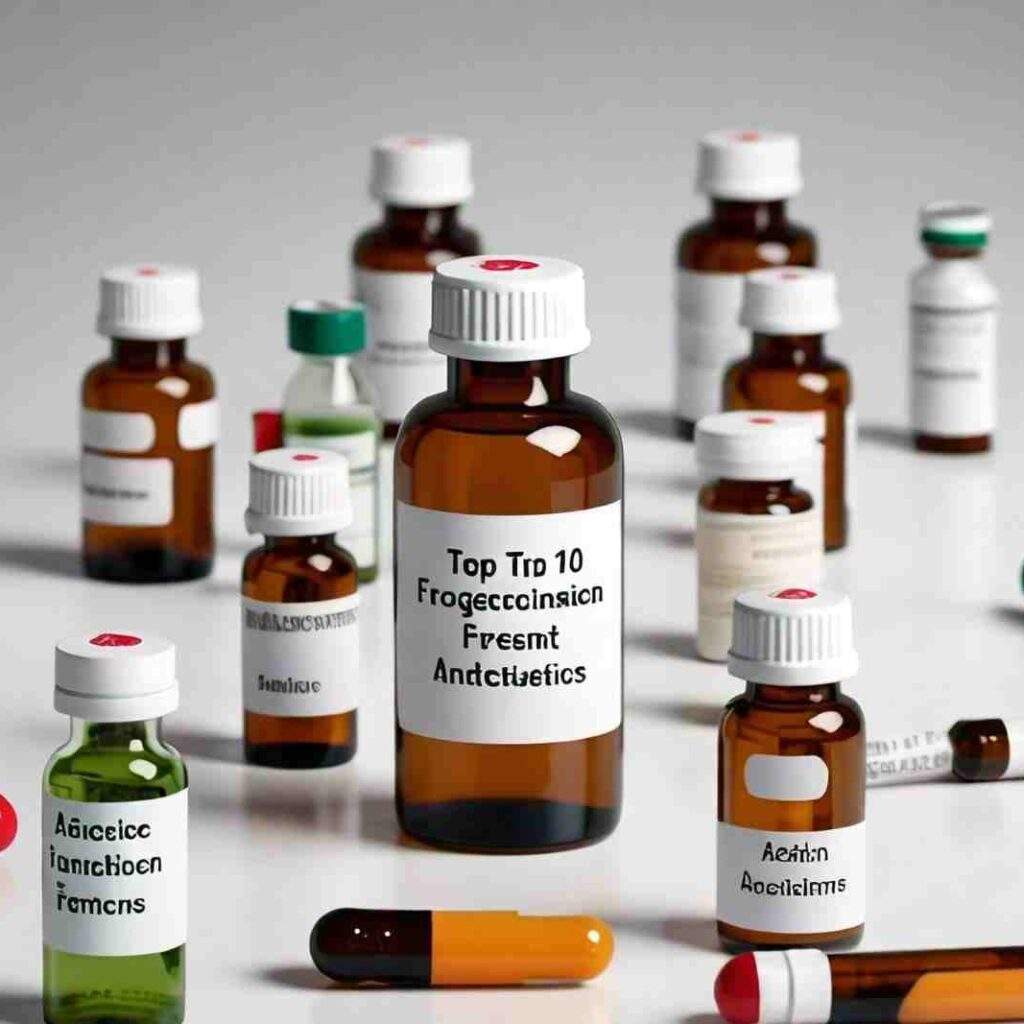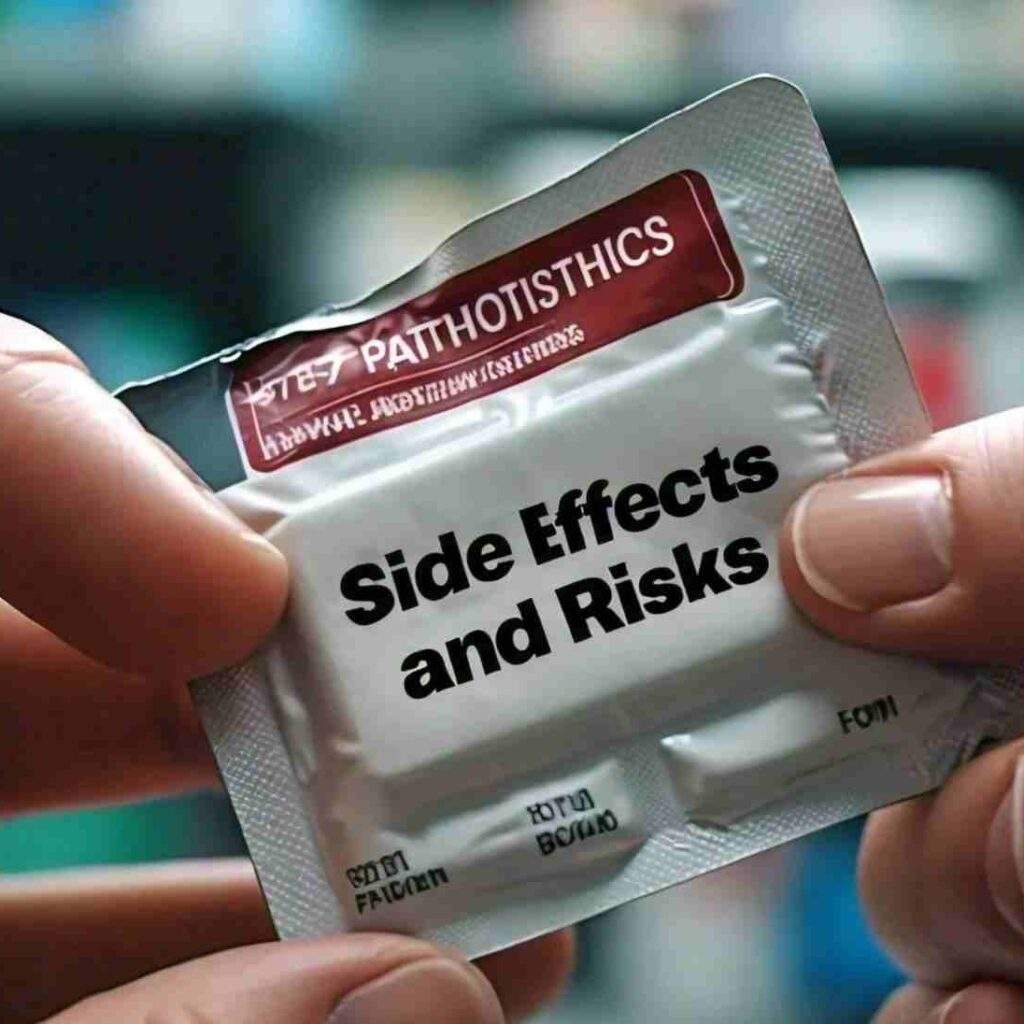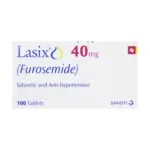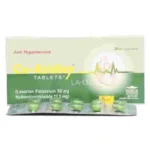Antibiotic medications kill or inhibit the growth of microorganisms, helping our bodies fight off infections. With the rise of antibiotic resistance, it’s important to identify the strongest antibiotics for various bacterial infections, ensuring effective treatment and preventing further resistance.
We will explore the various classes of antibiotics, their mechanisms of action, and their efficacy against specific bacterial infections as one of the strongest antibiotics.

By doing so, we aim to:
- Educate readers on the importance of antibiotic selection
- Provide healthcare professionals with a valuable resource for treatment decisions
- Help individuals understand the options available for treating bacterial infections
Having said that, let’s start our guide!
Visit our shop page to discover the latest antibiotic drugs & many more
What Is The Strongest Antibiotic For Bacterial Infection?

Table Of Contents
Factors Determining The Strongest Antibiotics
These factors help healthcare professionals determine the most effective antibiotic for a specific infection, ensuring optimal treatment outcomes.

When evaluating the strength of an antibiotic, several factors come into play:
1. Antibiotic Potency
Definition of Potency:
Antibiotic potency refers to the drug’s ability to inhibit or kill microorganisms at a given concentration.
How Potency is Measured:
Potency is typically measured by determining the Minimum Inhibitory Concentration (MIC), which is the lowest concentration of the antibiotic required to inhibit bacterial growth.
2. Antibiotic Spectrum
Broad-spectrum vs. Narrow-spectrum:
- Broad-spectrum antibiotics target a wide range of bacteria, including both Gram-positive and Gram-negative bacteria.
- Narrow-spectrum antibiotics target a specific type of bacteria or a limited range of microorganisms.
Situations where each is used:
- Broad-spectrum antibiotics are often used as empirical therapy for severe infections or when the causative agent is unknown.
- Narrow-spectrum antibiotics are preferred for targeted therapy, reducing the risk of antibiotic resistance and minimizing side effects.
3. Bacterial Resistance
What is antibiotic resistance:
Antibiotic resistance occurs when bacteria develop mechanisms to evade the effects of antibiotics, rendering them ineffective.
Common resistant bacteria:
- Methicillin-resistant Staphylococcus aureus (MRSA)
- Vancomycin-resistant Enterococci (VRE)
- Extended-spectrum beta-lactamase (ESBL) producers
4. Patient-Specific Factors
- Allergies:
Known allergies to specific antibiotics can significantly impact treatment choices. - Age:
Antibiotic selection may vary based on patient age, as some antibiotics are more suitable for pediatric or geriatric populations. - Other medical conditions:
Underlying medical conditions, such as kidney or liver disease, can influence antibiotic selection due to potential toxicity or drug interactions.
Top 10 Strongest Antibiotics for Bacterial Infections
Note: The classification and examples of antibiotics are not exhaustive, and the use of antibiotics should always be guided by antibiotic stewardship principles and local resistance patterns.

Here are some of the strongest antibiotics, categorized by class, along with their overview, uses, and examples:
1. Cephalosporins
Overview and uses:
Cephalosporins are broad-spectrum antibiotics effective against a wide range of Gram-positive and Gram-negative bacteria. They are commonly used to treat skin infections, pneumonia, meningitis, and urinary tract infections.
Examples:
- Ceftriaxone (Rocephin): used to treat severe infections, including meningitis and septicemia
- Cefepime (Maxipime): used to treat pneumonia, urinary tract infections, and skin infections
2. Carbapenems
Overview and uses:
Carbapenems are powerful antibiotics reserved for severe, life-threatening infections caused by multidrug-resistant bacteria. They are effective against a broad spectrum of Gram-positive and Gram-negative bacteria.
Examples:
- Meropenem (Merrem): used to treat complicated skin infections, intra-abdominal infections, and meningitis
- Imipenem (Primaxin): used to treat lower respiratory tract infections, urinary tract infections, and skin infections
3. Fluoroquinolones
Overview and uses:
Fluoroquinolones are broad-spectrum antibiotics effective against Gram-positive and Gram-negative bacteria. They are commonly used to treat respiratory tract infections, urinary tract infections, and skin infections.
Examples:
- Ciprofloxacin (Cipro): used to treat respiratory tract infections, urinary tract infections, and skin infections
- Levofloxacin (Levaquin): used to treat respiratory tract infections, urinary tract infections, and skin infections
4. Glycopeptides
Overview and uses:
Glycopeptides are narrow-spectrum antibiotics effective against Gram-positive bacteria, including MRSA. They are commonly used to treat severe skin infections, pneumonia, and endocarditis.
Examples:
- Vancomycin (Vancocin): used to treat MRSA infections, including skin infections and pneumonia
5. Aminoglycosides
Overview and uses:
Aminoglycosides are broad-spectrum antibiotics effective against Gram-negative bacteria. They are commonly used to treat severe infections, including septicemia and meningitis.
Examples:
- Gentamicin (Garamycin): used to treat severe infections, including septicemia and meningitis
- Amikacin (Amikin): used to treat severe infections, including septicemia and meningitis
6. Macrolides
Overview and uses:
Macrolides are broad-spectrum antibiotics effective against Gram-positive and Gram-negative bacteria. They are commonly used to treat respiratory tract infections, skin infections, and genital infections.
Examples:
- Azithromycin (Zithromax): used to treat respiratory tract infections, skin infections, and genital infections
- Clarithromycin (Biaxin): used to treat respiratory tract infections, skin infections, and Helicobacter pylori infections
7. Lincosamides
Overview and uses:
Lincosamides are narrow-spectrum antibiotics effective against Gram-positive bacteria, including MRSA. They are commonly used to treat severe skin infections, pneumonia, and septicemia.
Examples:
- Clindamycin (Cleocin): used to treat severe skin infections, pneumonia, and septicemia
8. Polymyxins
Overview and uses:
Polymyxins are narrow-spectrum antibiotics effective against Gram-negative bacteria, including Pseudomonas aeruginosa. They are commonly used to treat severe infections, including septicemia and meningitis.
Examples:
- Colistin (Coly-Mycin): used to treat severe infections, including septicemia and meningitis
9. Oxazolidinones
Overview and uses:
Oxazolidinones are narrow-spectrum antibiotics effective against Gram-positive bacteria, including MRSA. They are commonly used to treat severe skin infections, pneumonia, and septicemia.
Examples:
- Linezolid (Zyvox): used to treat severe skin infections, pneumonia, and septicemia
10. Tetracyclines
Overview and uses:
Tetracyclines are broad-spectrum antibiotics effective against Gram-positive and Gram-negative bacteria. They are commonly used to treat respiratory tract infections, skin infections, and genital infections.
Examples:
- Doxycycline (Vibramycin): used to treat respiratory tract infections, skin infections, and genital infections
- Minocycline (Minocin): used to treat respiratory tract infections, skin infections, and acne
Additional mentions:
- Vancomycin 3.0: a newer formulation of vancomycin with improved pharmacokinetics and efficacy against MRSA
- Penicillin: a narrow-spectrum antibiotic effective against Gram-positive bacteria, commonly used to treat streptococcal infections
- Amoxicillin: a narrow-spectrum antibiotic effective against Gram-positive bacteria, commonly used to treat respiratory tract infections and skin infections
Visit our shop page to discover the latest antibiotic drugs & many more
Specific Use Cases Of Antibiotics
Note: The specific antibiotic treatment should be guided by culture and susceptibility results, as well as local resistance patterns.

1. Severe Infections
Typically used antibiotics:
- Broad-spectrum antibiotics, such as:
- Carbapenems (e.g., Meropenem, Imipenem)
- Cephalosporins (e.g., Ceftriaxone, Cefepime)
- Glycopeptides (e.g., Vancomycin)
- Aminoglycosides (e.g., Gentamicin, Amikacin)
Examples of severe infections:
- Sepsis
- Meningitis
- Pneumonia
- Septicemia
- Endocarditis
2. Multi-Drug Resistant Infections
Treatment options for resistant bacteria:
- Combination therapy with multiple antibiotics
- Use of newer antibiotics, such as:
- Linezolid (Oxazolidinones)
- Daptomycin (Lipopeptides)
- Colistin (Polymyxins)
- Antibiotic stewardship programs to optimize antibiotic use
Examples of resistant bacteria and corresponding antibiotics:
- MRSA (Methicillin-resistant Staphylococcus aureus):
- Vancomycin
- Linezolid
- Daptomycin
- VRE (Vancomycin-resistant Enterococci):
- Linezolid
- Daptomycin
- Quinupristin/Dalfopristin
- ESBL-producing bacteria (Extended-spectrum beta-lactamase):
- Carbapenems (e.g., Meropenem, Imipenem)
- Cephalosporins (e.g., Ceftriaxone, Cefepime)
- Pseudomonas aeruginosa:
- Colistin
- Aminoglycosides (e.g., Gentamicin, Amikacin)
- Cephalosporins (e.g., Cefepime)
Note: The specific antibiotic treatment should be guided by culture and susceptibility results, as well as local resistance patterns.
Side Effects And Risks
Note: It’s essential to use antibiotics judiciously and only when necessary, under the guidance of a healthcare professional.

Common Side Effects
- Gastrointestinal issues:
- Nausea
- Vomiting
- Diarrhea
- Abdominal pain
- Allergic reactions:
- Rash
- Itching
- Hives
- Anaphylaxis (rare)
Serious Side Effects
- Organ toxicity:
- Kidney damage (nephrotoxicity)
- Liver damage (hepatotoxicity)
- Hearing loss (ototoxicity)
- Long-term impacts:
- Increased risk of infections (e.g., C. difficile)
- Disruption of gut microbiota
- Potential impact on mental health (e.g., anxiety, depression)
Risks Of Overuse And Misuse
- Development of resistance:
- Overuse and misuse accelerate antibiotic resistance
- Reduced effectiveness of antibiotics
- Impact on gut microbiota:
- Disruption of balance and diversity
- Increased risk of infections and diseases
- Potential long-term consequences for overall health
Note: To use antibiotics judiciously and only when necessary, under the guidance of a healthcare professional.
Natural Alternatives And Complementary Treatments
Note: While natural antibiotics and complementary treatments can be useful, it’s essential to consult with a healthcare professional before using them, especially if you have a severe infection or underlying medical condition.

Natural antibiotics are substances found in nature that exhibit antimicrobial properties, effective against various microorganisms. While not a replacement for prescription antibiotics, they can be a useful complement or alternative in certain situations.
Examples Of Natural Antibiotics
- Garlic: contains compounds like allicin, which have antibacterial and antiviral properties
- Honey: has antimicrobial properties, effective against certain bacteria and fungi
- Oregano oil: contains carvacrol, which has antibacterial and antifungal properties
Effectiveness Compared To Prescription Antibiotics
Research findings suggest that natural antibiotics can be effective against certain microorganisms, but their efficacy may vary compared to prescription antibiotics. Natural antibiotics may:
- Be less potent than prescription antibiotics
- Have a narrower spectrum of activity
- Require longer treatment durations
Situations Where Natural Antibiotics May Be Beneficial
- Mild to moderate infections
- Preventative measures (e.g., immune system support)
- Complementary treatment alongside prescription antibiotics
- Situations where antibiotic resistance is a concern
Complementary Treatments
- Probiotics: beneficial bacteria that support gut health and immune function
- Immune system support: supplements like vitamin C, zinc, and elderberry that enhance immune function
Final Thoughts
Antibiotics are powerful tools for combating bacterial infections, but their misuse can lead to antibiotic resistance and reduced effectiveness.

Natural antibiotics and complementary treatments can be useful in certain situations, but should not replace prescription antibiotics without guidance. By working together, we can preserve the effectiveness of antibiotics and protect public health.
Encouragement For Responsible Antibiotic Use
Let’s use antibiotics wisely and take steps to prevent antibiotic resistance:
- Use antibiotics only when necessary
- Follow healthcare provider guidance
- Complete full treatment courses
- Avoid overuse and misuse
- Support antibiotic stewardship initiatives
Together, we can ensure the continued effectiveness of antibiotics and protect our health.
Frequently Asked Questions (FAQs) – Strongest Antibiotics
What Antibiotic Is Used for Severe Bacterial Infections?
Severe bacterial infections require strong antibiotics like Vancomycin, Meropenem, and Piperacillin/Tazobactam.
Which Antibiotic Is Most Effective Against Bacteria?
The most effective antibiotic depends on the type of bacteria, but broad-spectrum antibiotics like Amoxicillin, Ciprofloxacin, and Doxycycline are often effective.
What Type of Antibiotic Directly Kills Bacteria?
Bactericidal antibiotics like Penicillins, Cephalosporins, and Aminoglycosides directly kill bacteria.
Which Antibiotic is Most Effective Overall?
Amoxicillin/Clavulanate and Levofloxacin are often considered among the most effective overall due to their broad-spectrum activity and effectiveness against various infections.
What are the Top 3 Antibiotics?
Azithromycin, Clindamycin, and Metronidazole are often considered among the top 3 antibiotics due to their effectiveness, safety, and versatility.
Which Tablet is Best for Bacterial Infection?
Augmentin (Amoxicillin/Clavulanate) and Zithromax (Azithromycin) are popular and effective antibiotic tablets.
Which is the Super Powerful Antibiotic?
Colistin and Linezolid are considered powerful antibiotics due to their effectiveness against resistant bacteria.
Which Antibiotic Works Faster?
Erythromycin and Ceftriaxone are fast-acting antibiotics often used for severe infections.
What is the Perfect Antibiotic?
The perfect antibiotic would be effective, safe, and resistant to resistance, but no single antibiotic meets all these criteria. Amoxicillin and Cefuroxime are examples of well-rounded antibiotics.
What is the Hardest Bacterial Infection to Get Rid Of?
MRSA and Pseudomonas aeruginosa are difficult-to-treat bacterial infections due to their resistance to antibiotics.
What are Emergency Antibiotics?
Imipenem and Ceftazidime are examples of emergency antibiotics used in life-threatening situations.
Which is the Most Safe Antibiotic?
Penicillin V and Cephalexin are considered safe antibiotics for common use.
Strong Antibiotics for Specific Infections
Clindamycin and Doxycycline for skin infections, Azithromycin and Levofloxacin for respiratory infections, and Nitrofurantoin and Ciprofloxacin for urinary tract infections.
List of Strongest Antibiotic
A comprehensive list of the strongest antibiotics includes Vancomycin, Meropenem, Piperacillin/Tazobactam, and others.
Antibiotic Tablets Names
Commonly prescribed antibiotic tablets include Augmentin, Zithromax, and Cipro.
Types of Antibiotic
There are 7 types of antibiotics: Penicillins, Cephalosporins, Macrolides, Fluoroquinolones, Tetracyclines, Aminoglycosides, and Sulfonamides.
Best Drug to Treat Infection
The best drug to treat an infection depends on the type of infection, effectiveness, side effects, and resistance patterns.
………………………….
Disclaimer:
Commissions we earn from partner links on this page do not influence our content. Our editorial content is based on thorough research and insights from qualified medical professionals to ensure the highest standards of accuracy and reliability.
Information provided on Doseway is for educational purposes only. Your health and wellness are unique to you, and the products and services we review may not be suitable for your individual circumstances. We do not offer personal medical advice, diagnosis, or treatment plans. For specific advice, please consult with a healthcare professional. Doseway adheres to strict editorial integrity standards. To the best of our knowledge, all content is accurate as of the date posted, though offers and information may change. The opinions expressed are the author’s own and have not been influenced, approved, or endorsed by our partners.





Add a Comment